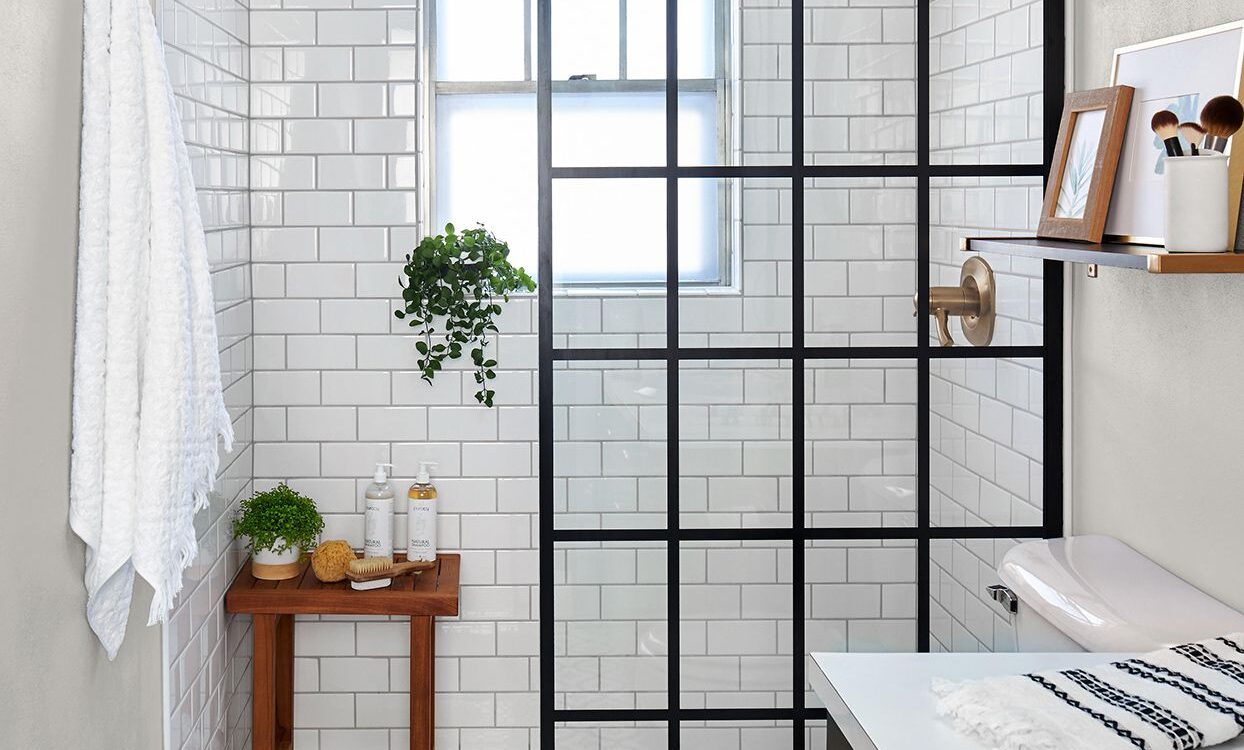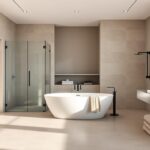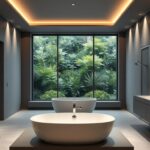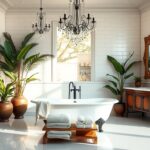Have you ever stood in your compact bathroom, wondering how to make it feel less like a closet and more like a sanctuary? We’ve been there too. Limited square footage doesn’t have to mean limited potential—in fact, it’s an invitation to reimagine what’s possible. A well-planned Small Bathroom Remodel can transform even the tiniest space into something functional, stylish, and refreshing.
Transforming tight areas requires equal parts creativity and strategy. Through years of helping homeowners, we’ve learned that every inch matters. The right layout choices can create the illusion of openness, while smart storage solutions keep clutter at bay. You’ll be surprised how light-reflecting surfaces and vertical accents can stretch visual boundaries.
This isn’t just about function—it’s about crafting a space that sparks joy. Maybe that means installing a floating vanity to free up floor space or choosing bold tiles that add personality without overwhelming. We’ll guide you through balancing practicality with aesthetics to create a room that truly feels like yours.
Key Takeaways
- Strategic layouts and reflective surfaces enhance perceived space
- Vertical storage maximizes functionality without sacrificing style
- Bold design elements work exceptionally well in compact areas
- Multi-functional fixtures optimize limited square footage
- Proper lighting creates depth and improves ambiance
Welcome to Our Small Bathroom Remodel Journey
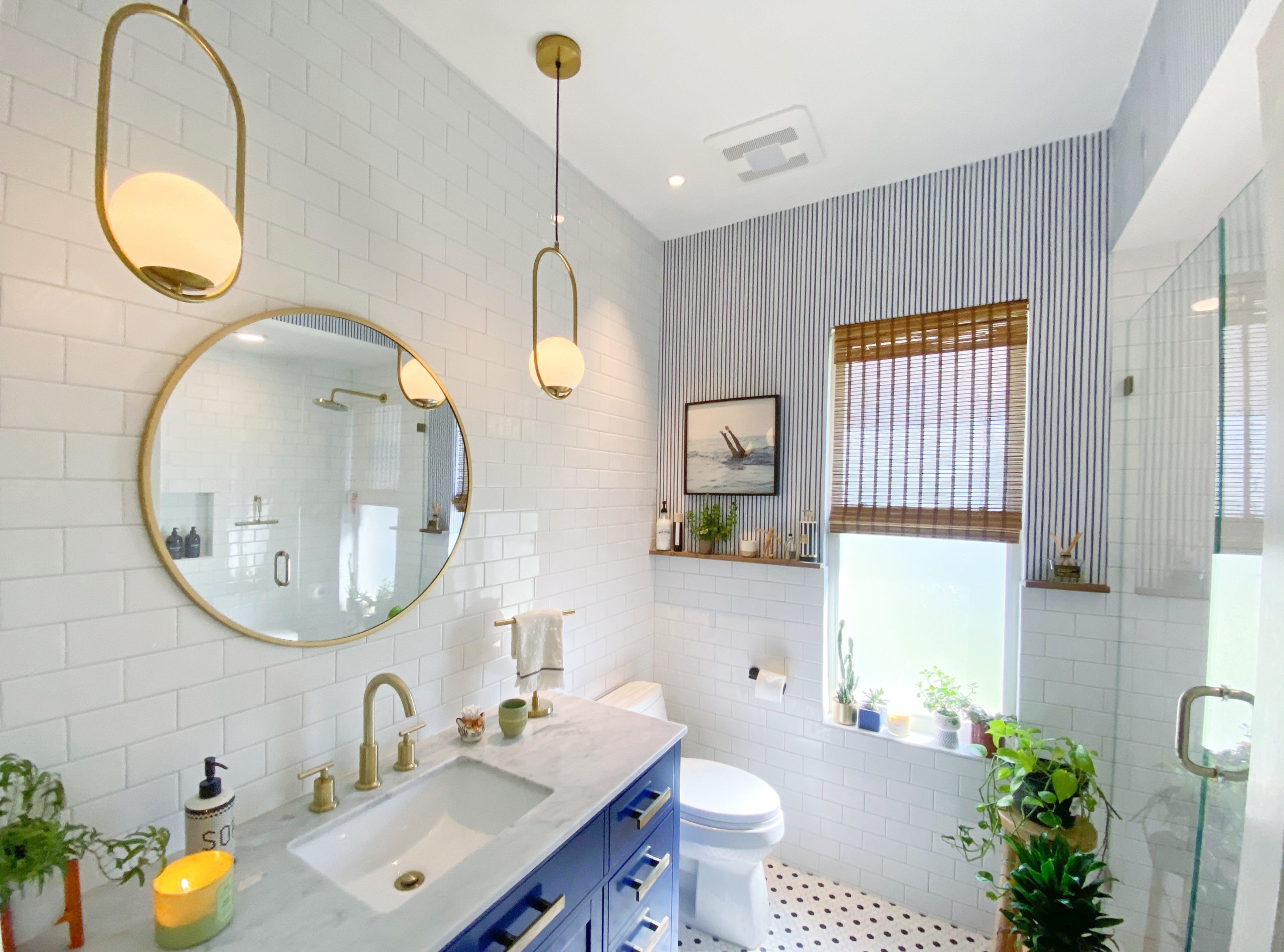
Think your cozy washroom can’t wow? Let’s challenge that notion together. Over 63% of homeowners tell us they initially doubted their space’s potential—until they saw smart design in action.
We’ve helped turn narrow layouts into spa-like retreats where vertical solutions do heavy lifting. Picture glass shelves reaching toward the ceiling or recessed cabinets that disappear into walls. These aren’t just space-savers—they’re style statements.
Our favorite projects prove that limitations spark innovation. One client’s 45-square-foot area became a jewel box with hexagonal floor tiles and a skylight. Another’s awkward corner now houses a custom sink that guests rave about.
| Traditional Approach | Modern Solution |
|---|---|
| Focus on square footage | Maximize vertical space |
| Horizontal storage units | Floor-to-ceiling shelving |
| Bulky cabinetry | Floating vanities |
| Closed-off feel | Light-enhancing surfaces |
You’ll discover how color psychology can expand walls visually and why matte finishes often work better than glossy ones in tight areas. We’ll share trade secrets like using pocket doors instead of swing-out models—a simple swap that gains precious inches.
Ready to rework your layout? Let’s transform “cramped” into “charming” through intentional choices that reflect your taste while boosting functionality.
Embracing a Small Bathroom Remodel in Limited Space

What if tight quarters became your greatest design ally? We’ve transformed countless compact washrooms by treating spatial constraints as opportunities rather than obstacles. The magic happens when you rethink standard layouts and prioritize multi-functional elements.
Essential fixtures needn’t dominate your floor plan. Through strategic placement and scaled-down proportions, even a 5’x8’ area can house a shower, vanity, and toilet comfortably. One client’s narrow powder room gained breathing room simply by switching to a corner sink and space-enhancing strategies.
| Common Mistake | Smart Alternative |
|---|---|
| Busy patterned walls | Tonal color gradients |
| Oversized fixtures | Compact, wall-hung models |
| Multiple decor items | Single statement piece |
| Closed storage units | Frosted glass cabinets |
Color choices make or break spatial perception. Light-reflecting neutrals expand walls visually, while a single accent wall adds depth without chaos. We often use textured tiles in muted tones—they catch light beautifully without overwhelming.
Storage solutions should work vertically. Recessed niches above toilets or floating shelves beside mirrors keep essentials handy without clutter. Remember: every item needs to earn its place through utility and aesthetic appeal.
The true joy comes from balancing practicality with personality. A well-cho
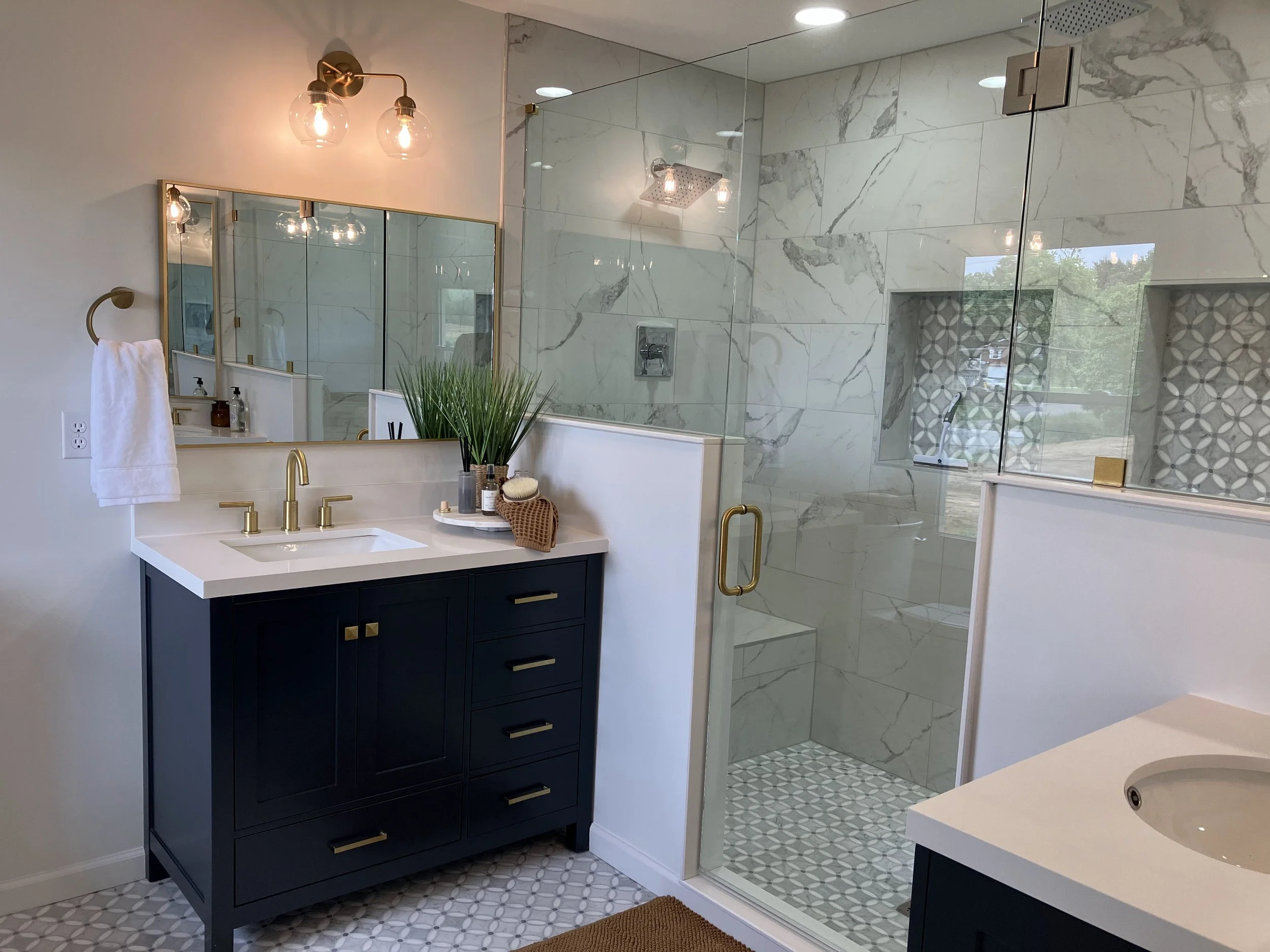
sen mirror can double as art, while clever lighting transforms cramped corners into inviting nooks. Limitations? They’re just launchpads for innovation.
Creative Layout and Design Ideas to Optimize Every Inch
Tight spaces can spark the most ingenious design solutions—here’s how. We’ve transformed countless compact areas by treating walls as prime real estate and rethinking entryways. Vertical strategies create breathing room where horizontal space falls short.
Utilizing Vertical Stripes and Wall Space
Striped patterns work like visual elevators. Designer Ashley Gilbreath proved this by wrapping a powder room in vertical stripes, making its low ceiling appear higher. Slim sconces and floating shelves maintain this upward focus while holding essentials.
Every wall surface becomes functional art. Recessed niches above toilets store toiletries discreetly. Built-in shelving beside mirrors displays decorative bowls without eating into walkways. Pro tip: Matte finishes reduce glare in narrow areas better than glossy alternatives.
Incorporating Clever Door and Window Solutions
Traditional swing doors steal precious inches. Pocket models that glide into walls reclaim up to 10 square feet—enough for a corner vanity. Frosted window films maintain privacy while bathing rooms in natural light.
Plantation shutters offer adjustable illumination control. Their horizontal lines complement vertical storage elements, creating balanced visual rhythm. We often pair these with transom windows that pull light deeper into the layout.
Through intentional choices, even doorways become design features. Glass-paneled entries amplify brightness, while barn-style sliders add rustic charm. The key? Let every element serve multiple purposes—beauty and brains in one package.
Clever Storage and Built-In Solutions for Tight Bathrooms
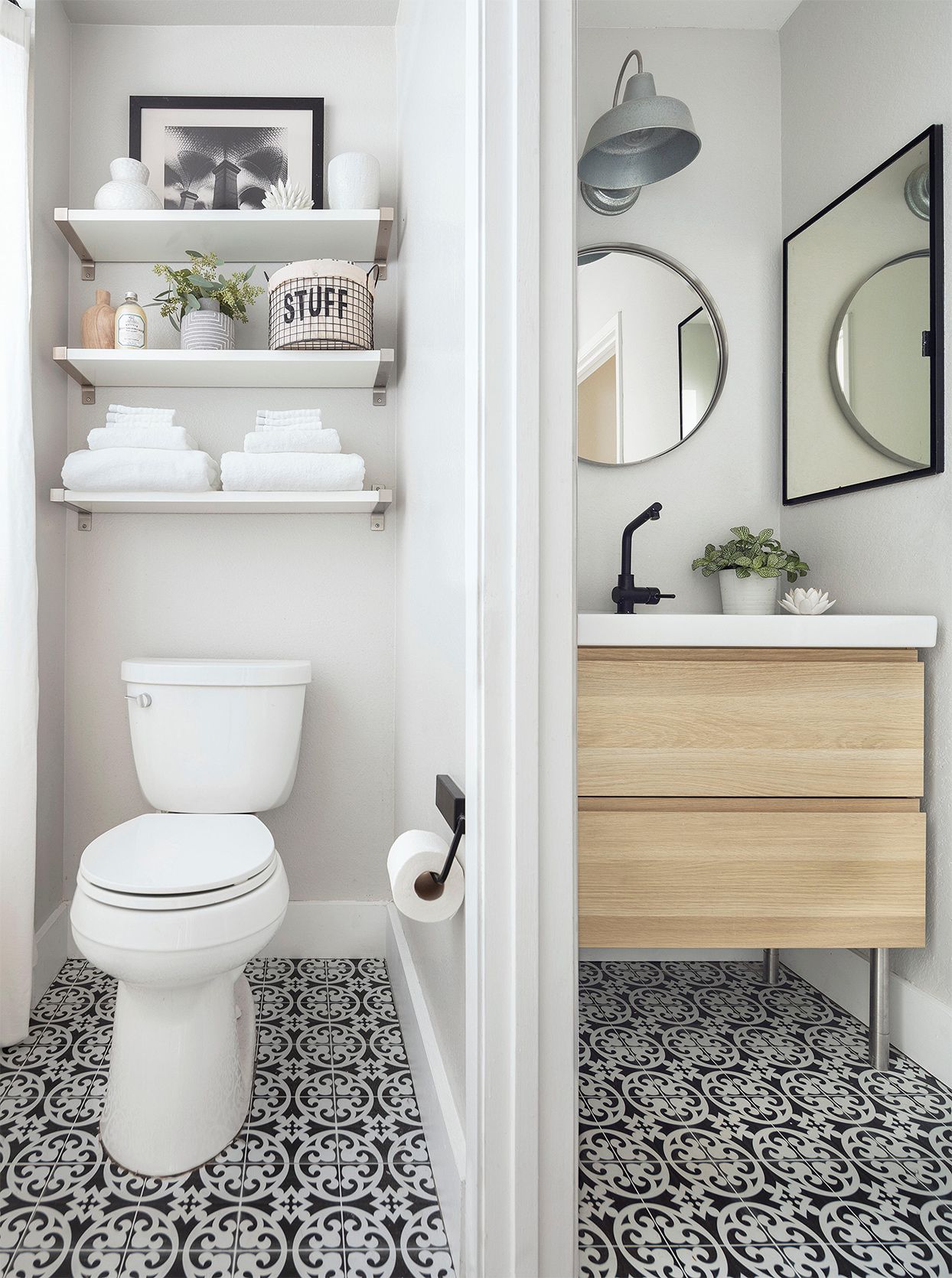
Storage becomes the unsung hero when square footage shrinks. We focus on solutions that disappear into your walls while keeping essentials within reach. Built-in features blend seamlessly with your design, proving that smart storage can elevate style as much as function.
Floating Vanities and Concealed Plumbing
Wall-mounted units work double duty in compact areas. Our floating vanity designs lift storage off the floor, creating airy spaces beneath for cleaning ease. Designer Brittany Hakimfar’s quartzite counter demonstrates how concealed plumbing transforms cluttered corners into minimalist statements.
These installations often include:
- Hidden compartments for daily essentials
- Soft-close drawers that maximize vertical real estate
- Integrated towel bars on cabinet sides
Corner Vanities and Built-In Shelves
Underused angles become prime real estate with triangular vanities. We’ve installed units that nestle perfectly into 90-degree corners, freeing up central walkways. One client’s shelving system carved into the wall cavity stores rolled towels like displayed art.
| Traditional Storage | Built-In Solution |
|---|---|
| Freestanding cabinets | Recessed medicine cabinets |
| Over-the-toilet racks | Floating corner shelves |
| Exposed plumbing | Vanity-encased pipes |
Collaborate with contractors to identify unused wall depths. Shower niches between studs or slim cabinets beside mirrors often yield surprising storage potential. The goal? Every inch should serve purpose and beauty.
Inspiring Lighting Techniques for a Brighter Bathroom
Light transforms more than visibility—it shapes how we experience space. Through strategic layering, even compact areas become airy retreats that feel twice their actual size. We focus on balancing practicality with atmospheric warmth to create rooms that work beautifully at dawn and dusk.
Ambient and Task Lighting Strategies
Every well-lit area needs two types of illumination. Ambient lighting acts as the base layer, with waterproof fixtures above showers casting soft glows. Recessed ceiling lights or flush-mounted options keep sightlines clean while brightening corners.
For precision tasks like makeup application, we install adjustable sconces at eye level. These eliminate chin shadows better than overhead sources. Our golden rule? Avoid harsh fluorescents—they flatten features and make surfaces look sterile.
- LED strips under vanities add subtle glow
- Backlit mirrors create depth perception
- Dimmable switches adjust mood instantly
We recently transformed a windowless room using three light layers. Frosted globe pendants provided ambient brightness, while vertical LED columns beside the mirror offered flawless task lighting. The result? A spa-like atmosphere that feels expansive yet intimate.
Remember: light direction matters as much as intensity. Upward-facing fixtures bounce illumination off ceilings, making low rooms feel taller. Pair these techniques with matte finishes to reduce glare and enhance comfort.
Innovative Fixtures and Finishing Touches in Design
Details make the difference between ordinary and extraordinary spaces. We’ve seen how thoughtful hardware choices elevate rooms from utilitarian to unforgettable. It’s where practicality dances with personality.
Take Sara Swabb’s brilliant mirror solution. Faced with installation challenges, her team used four beveled-edge mirrors instead of one large piece. “The segmented look became our favorite design element,” she shares. This approach added texture while simplifying logistics.
Unique Sconces and Mirror Installations
Lighting deserves dual citizenship in form and function. Mounting sconces directly on glass surfaces creates focused illumination without bulky fixtures. We recently installed brass-framed lights that cast warm patterns across matte tiles—proving hardware can be both tool and artwork.
Three principles guide our finishing touch philosophy:
- Multi-purpose fixtures (like sconces with integrated shelves)
- Mixed metallic finishes that add depth
- Textured materials that catch light differently throughout the day
Brass accents work particularly well in compact areas. Their warm glow softens modern lines, creating balance. When paired with backlit mirrors, they transform basic tasks into luxurious experiences.
These elements don’t just complete the look—they redefine how spaces feel. For more ideas on enhancing functionality and style, explore our case studies. Remember: great design lives in the details you notice… and those you simply feel.
Budget-Friendly Remodeling Ideas and DIY Tricks
Who says style demands deep pockets? We’ve transformed countless compact washrooms using wallet-friendly strategies that deliver big impact. The secret lies in knowing where to invest and where to innovate.
One client’s linen shower curtain became an unexpected hero. What started as a temporary replacement for glass doors turned into a beloved design feature. The tension rod installation required zero drilling—just effortless elegance that softened the space.
Limited square footage means you can splurge strategically. Mosaic marble floors became affordable when sourced from chain retailers instead of boutique shops. Their bulk pricing and single markup structure helped stretch budgets further.
| Traditional Choice | Budget Win |
|---|---|
| Custom glass shower doors | Linen curtain + tension rod |
| Boutique tile stores | Big-box retailer materials |
| Full professional installs | Hybrid DIY/pro approach |
Three ways we help homeowners save:
- Refresh fixtures with metallic spray paint
- Install peel-and-stick backsplashes
- Add floating shelves using brackets
These updates prove that thoughtful swaps create luxury feels without luxury prices. Pair a few showstopper elements with smart DIY touches—your space will shine while your budget stays grounded.
Safety, Codes, and Practical Considerations for Remodeling
Behind every beautiful transformation lies smart planning. While design choices excite us, code compliance ensures your sanctuary remains safe for years. Let’s walk through essential requirements that protect both style and functionality.
Electrical, Plumbing, and Ventilation Essentials
GFCI outlets are non-negotiable near water sources. These life-saving devices cut power faster than you can blink—critical when using appliances near sinks or showers. We always install them within 3 feet of wet zones.
Proper ventilation prevents mold battles. Exhaust fans should move at least 50 cubic feet per minute (CFM) for toilets and showers. Combine this with airtight plumbing traps to block sewer gases from entering your home.
Space planning meets legal requirements too. Building codes mandate 21″ clearance in front of fixtures. Our team measures twice to ensure comfortable movement between the shower, toilet, and vanity. Even compact layouts need breathing room to feel inviting.
Remember: meeting standards isn’t restrictive—it’s liberating. When systems work safely behind the scenes, you’re free to enjoy every moment in your refreshed space.
FAQ
What door alternatives work best for tight layouts?
Pocket doors or barn-style sliders save precious square footage compared to traditional swinging options. Frosted glass panels also maintain privacy while allowing natural light to flow through.
Are floating vanities worth considering for storage?
Absolutely! Floating vanities free up floor space, making cleaning easier and creating visual openness. Pair them with recessed cabinets or under-shelf baskets to maximize organization without clutter.
Can lighting truly transform how a compact room feels?
Yes—layered lighting is key. Combine overhead ambient fixtures with sconces flanking mirrors to eliminate shadows. LED strips under vanities add a modern touch while boosting functionality.
How do mirrors enhance both style and practicality?
Oversized or strategically placed mirrors reflect light and views, doubling the perceived depth. Frameless designs or arched shapes add character, while medicine cabinets with built-in storage keep essentials hidden.
What budget-friendly upgrades offer the most impact?
Swap outdated hardware for matte black or brushed brass finishes. Regrouting tiles, painting cabinets, and adding peel-and-stick backsplashes refresh the look without major renovations.
What safety factors should we prioritize during renovations?
Always ensure GFCI outlets near water sources, proper ventilation to prevent mold, and slip-resistant flooring. Consult local codes for spacing around fixtures—like toilet clearances—to avoid costly revisions later.
